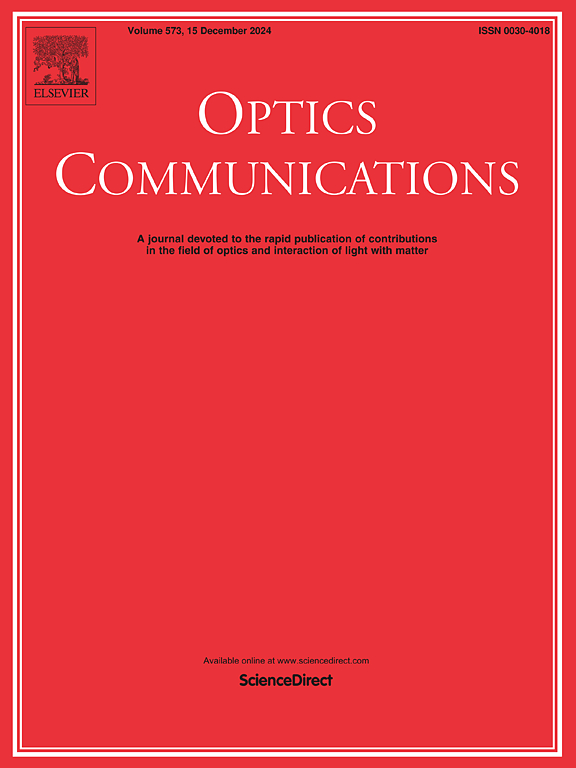CMA-ES增强了光学非线性激活函数的优化
IF 2.2
3区 物理与天体物理
Q2 OPTICS
引用次数: 0
摘要
全光和光电神经网络的发展是一个快速发展的研究领域。在该领域中,光学非线性激活函数(ONAF)器件的优化和可重构性至关重要。在这项工作中,我们提出了一个基于协方差矩阵自适应进化策略(CMA-ES)的MZI和mrr的ONAF设备优化框架。将该方法应用于人工神经网络(ann)的优化中,拟合优化函数的均方根误差(RMSE)可低至−86.0 dB。我们还提出了定向耦合器(DC)中的电光(E/O)调制的理论分析,使功率耦合系数可重构。此外,我们研究了另一种MRR配置,其中输出光与来自下降端口而不是通过端口的MZI耦合,从而获得最佳性能。该设置允许实现几个激活函数,包括参数化ReLU,在MNIST手写数字识别任务中达到100%的训练精度和99.1%的验证精度。我们的发现为集成光子神经网络光激活器件的设计和优化提供了新的见解。本文章由计算机程序翻译,如有差异,请以英文原文为准。
CMA-ES enhanced optimization of optical nonlinear activation functions
The development of all-optical and electro-optical neural networks represents a rapidly growing field of research. In this field, optimization and reconfigurability of optical nonlinear activation functions (ONAF) devices are crucial. In this work, we propose an optimization framework for MZI and MRR-based ONAF devices using the Covariance Matrix Adaptation Evolution Strategy (CMA-ES). By incorporating this approach into the optimization of artificial neural networks (ANNs), the root mean square error (RMSE) of the fitted optimization functions can reach as low as −86.0 dB. We also present a theoretical analysis of electro-optical (E/O) modulation in directional couplers (DC), enabling reconfigurable power coupling coefficients. Additionally, we investigate an alternative MRR configuration where output light is coupled with MZI from the drop port instead of the through port, leading to optimal performance. This setup allows for the implementation of several activation functions including Parametric ReLU, which attains 100 % training accuracy and 99.1 % validation accuracy in the MNIST handwritten digit recognition task. Our findings provide new insights into the design and optimization of optical activation devices for integrated photonic neural networks.
求助全文
通过发布文献求助,成功后即可免费获取论文全文。
去求助
来源期刊

Optics Communications
物理-光学
CiteScore
5.10
自引率
8.30%
发文量
681
审稿时长
38 days
期刊介绍:
Optics Communications invites original and timely contributions containing new results in various fields of optics and photonics. The journal considers theoretical and experimental research in areas ranging from the fundamental properties of light to technological applications. Topics covered include classical and quantum optics, optical physics and light-matter interactions, lasers, imaging, guided-wave optics and optical information processing. Manuscripts should offer clear evidence of novelty and significance. Papers concentrating on mathematical and computational issues, with limited connection to optics, are not suitable for publication in the Journal. Similarly, small technical advances, or papers concerned only with engineering applications or issues of materials science fall outside the journal scope.
 求助内容:
求助内容: 应助结果提醒方式:
应助结果提醒方式:


